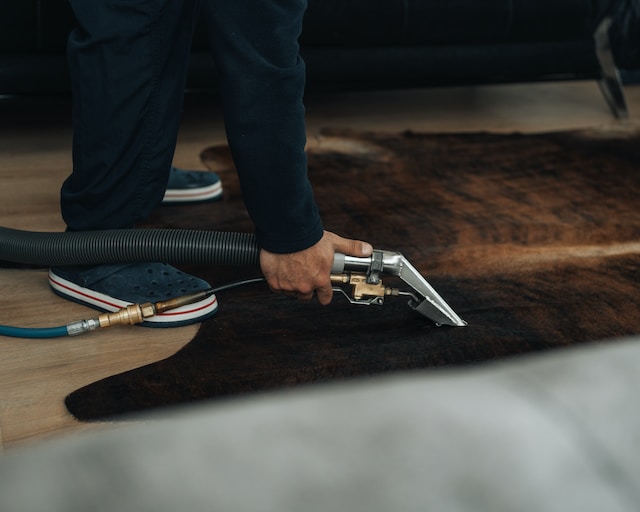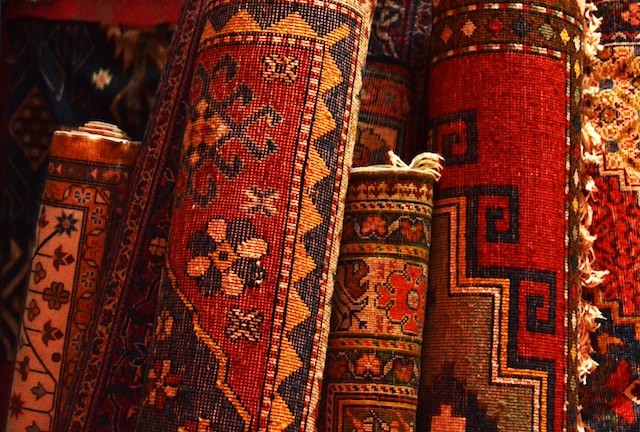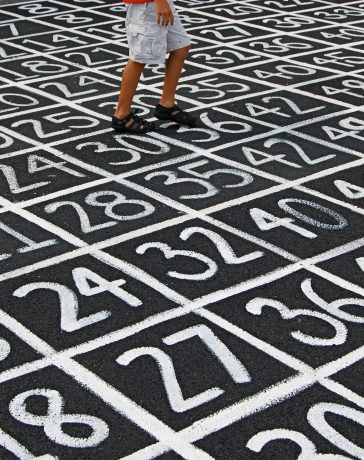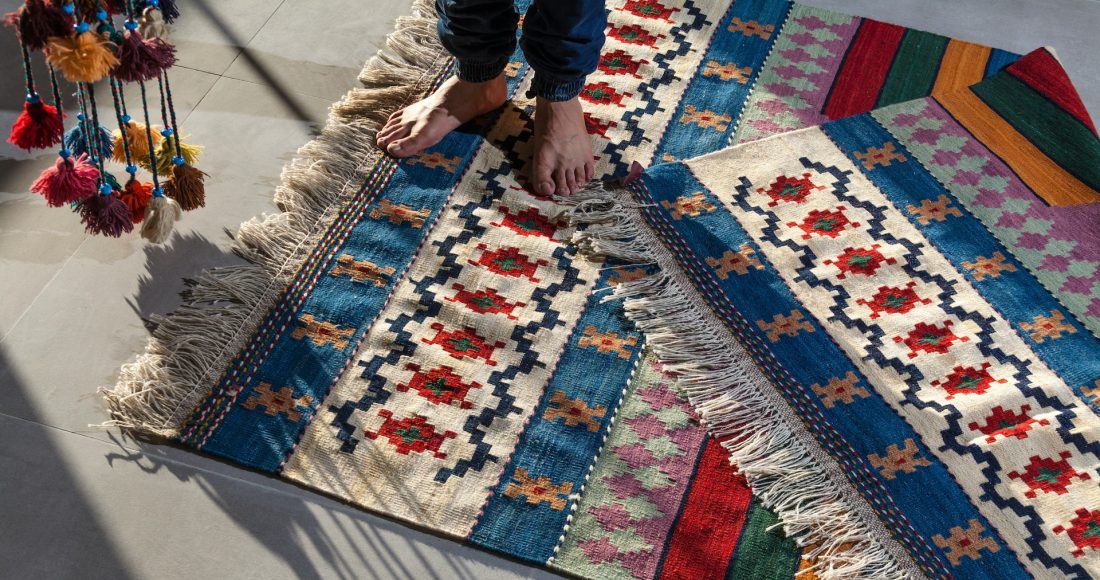Rugs can add warmth and color as beautiful works of art. However, like any art, they need proper maintenance to keep them looking their best.
One of the most common problems is dye run or migration when dark dyes creep into lighter areas after getting wet. It can be a frustrating problem, but it is relatively easy to fix.
Pre-Test
While saving money by doing a DIY rug color run removal may seem tempting, it’s not something you want to do without properly pre-testing your material. Doing so will help prevent additional damage to your oriental area rug and ensure you don’t aggravate the existing dye problem.
To pre-test your rugs, find an inconspicuous area to test on. Next, apply a liberal amount of liquid dishwashing foam onto the affected area and allow it to sit for a minute. Next, take a cotton rag and absorb the foam and liquid until it feels dry.

Once the carpet is dust-free, shampoo it using cool water and a mild liquid detergent or rug shampoo. Use a soft brush and work in small one-square-foot sections. Always rub in the direction of the fibers, and rinse thoroughly to remove excess soap. This process can also help determine the pH state of the rug, which is essential because an alkaline condition can destabilize the dye-fiber bond.
Blot
The first step in getting a dye run under control is to blot the affected area. Place a colorless towel over the spill and press down, never rubbing, until the surface liquid is completely absorbed. It will help prevent the stain from being pushed deeper into the rug fibers, which would cause even more damage when trying to remove it.
The second step is using a bowl of club soda to wet the stained area. It will “suspend” the colors in the rug, allowing you to work on them without fear of them bleeding to adjacent colors during washing.
Prompt spot cleaning will also reduce the chances of color problems occurring in the future. Vacuum regularly to prevent dirt and dust buildup. Attend to spills immediately. It is essential with hand-woven rugs.
Rinse
One of the most frustrating things that can happen to an oriental rug is when its colors run or bleed. It is essential to know what to do when this happens so that you can preserve your priceless treasure.
There are many reasons why a rug can experience color run or bleed. The dyes in the rug may not have been adequately stabilized during the dying process, or the fabric could be prone to leaking. If the paint has been used in the design of your rug, this can also cause the dye to run or bleed.
First, rinse the rug with cool water to prevent or fix a color problem. It can help to remove any lingering soap or dirt particles and may help prevent further bleeding. Next, blot the rug dry with a clean towel to absorb any excess water and soap. Then, re-rinse the rug thoroughly to remove any remaining soap and stains.

Dry
Many rugs are dyed after they are woven, and some of these are “fixed” before washing to ensure the dye will remain stable when it comes into contact with water. Unfortunately, even when this step is taken, it’s easy for a rug to experience color run or dye bleeding.
Drying the rug before moving on to other cleaning methods is essential because any remaining moisture can cause the same type of damage that long-standing water causes – mildew growth, brittle fibers, and that nasty smell that Oriental rugs have a reputation for retaining. It can also help to keep the face (front) of the rug flat, and fans can be used to promote air circulation to speed up evaporation.
If a rug is left wet for too long, it can become prone to mold and mildew and will eventually rot in the cotton foundation. It devalues the rug and can be a health hazard to anyone who steps on the rug.



































